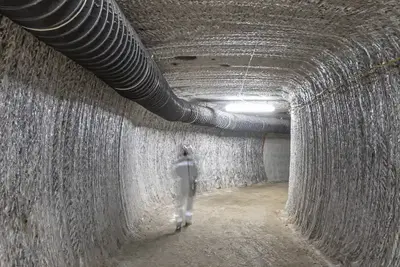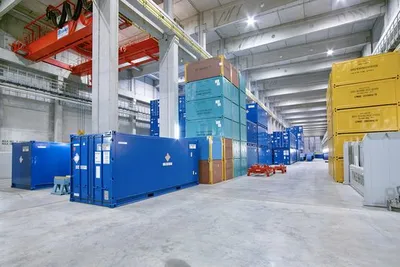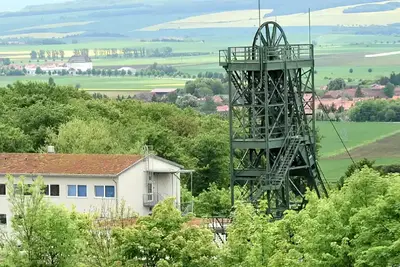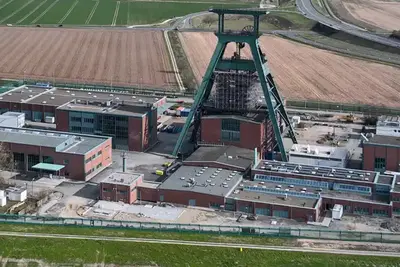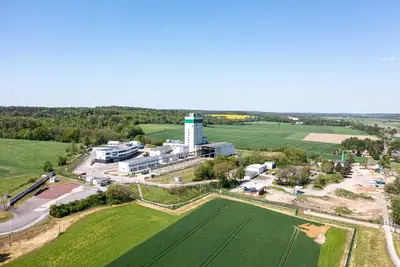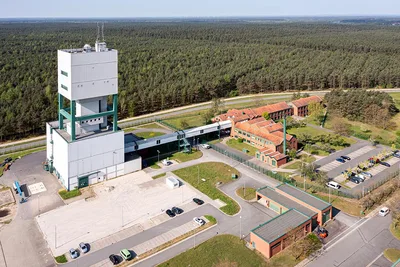Representative preliminary safety analyses
The representative preliminary safety analyses are the first safety assessments for a repository for high-level radioactive waste in the ongoing site selection procedure. They mark the first time that a potential repository in a rock formation is assessed – albeit provisionally, because each phase of the procedure delivers new and more-detailed insights that provide a clearer picture. On the road towards a proposal for siting regions to undergo surface exploration, the representative preliminary safety analyses act as a tool in order to further narrow down the potential areas in Germany that could serve as a repository site for high-level radioactive waste. At present, there are still 90 sub-areas to choose from.
On this page
- Building blocks of representative preliminarysafety analyses
- The method: how the BGE intends to assess safety
Before the representative preliminary safety analyses can be applied to the 90 sub-areas, a methodology is needed that ensures comparability and that the same benchmark is used for measurements across the board.
Documents to download

The BGE has been working on compiling this methodology since the start of 2021. Now, at the end of March 2022, it is presenting the progress of its work:
Proposed technical methodology (PDF, 2,2 MB, German only) (PDF, 2,21MB)
Abridged version for readers (PDF, 235 KB) (PDF, 0,23MB)
Annex (method derivation and example applications) (PDF, 52 MB, German only) (PDF, 51,75MB)
Repository search update
Überblick: Auf dem Weg zu den Standortregionen Planungswissenschaftliche Abwägungskriterien (planWK)More information
Forschung und EntwicklungBuilding blocks
The procedure for a representative preliminary safety analysis consists of a sequence of seven elements:
- specification of investigation areas
- geosynthesis
- preliminary safety concept; preliminary design of repository
- analysis of repository system
- comprehensive assessment of repository system
- evaluation of uncertainties
- derivation of exploration, research and development requirements
The method
How the BGE intends to assess safety
The representative preliminary safety analyses will provide a holistic view of the robustness of the repository system, i.e. of the interplay between the geology, the repository mine and the repository container. The core of the method for the representative preliminary safety analyses is to focus on the most suitable areas. This assessment and narrowing down of sub-areas will take place over the coming years as part of the representative preliminary safety analyses. In the run-up to these analyses, “investigation areas” will be designated that must each undergo a full representative preliminary safety analysis and must fully cover the sub-areas in accordance with the Repository Safety Analysis Ordinance (EndlSiUntV) (external link; Germn only). The BGE will designate an investigation area that covers each individual sub-area. In other words, a full representative preliminary safety analysis will be carried out for each sub-area. Insofar as multiple safety concepts are conceivable in one sub-area, dedicated investigation areas must be designated for each safety concept.
The BGE developed these investigation sub-areas as a methodological instrument in order to carry out the assessments in a comprehensible manner and with regard to uniform geoscientific characteristics, especially in the case of large sub-areas. By dividing these sometimes very large investigation areas into investigation sub-areas, the BGE can not only categorise the underlying data for the assessment in a comprehensible manner and on a small scale, but also ensure the transferability of information and parameters based on analogies. Investigation sub-areas are identified as geographically contiguous areas with geoscientific characteristics that are as uniform as possible (e.g. stratigraphically, lithologically, tectonically). These areas are assessed in a spatially differentiated manner in the event that areas within them exhibit different degrees of suitability for use as a repository site. If an investigation sub-area or a part thereof does not receive any predominantly good evaluations in the course of the assessment steps, these areas will be assigned to Category D or C in the overall evaluation. Such areas will not be further processed within the framework of the representative preliminary safety analyses.
Several assessment steps are carried out in order to systematically review all investigation areas and investigation sub-areas with regard to their potential suitability for the designation of a “containment-providing rock zone”. Here, investigation sub-areas can fail to meet the exclusion criteria or minimum requirements, which are reviewed on an ongoing basis throughout the representative preliminary safety analyses, because new insights are constantly being gained from existing or newly acquired data.
These areas are assigned to Category D. For such areas, the report regarding the investigation area based on the representative preliminary safety analyses will then state that they are not suitable for final disposal. Processing of these areas ends at this point. Areas that have cleared this hurdle undergo further examination in order to determine whether a containment-providing rock zone can be designated within an area – and how safe this zone might be. If, at this stage, unfavourable boundary conditions are observed that indicate that safe containment cannot be guaranteed, these areas will be assigned to Category C. For such areas, the report on the investigation area will also include an evaluation, and the areas will be excluded from further consideration.
Areas that pass all four assessment steps are assigned to Category A and move on to the renewed application of the geoscientific weighing criteria. Areas are assigned to Category B if, within the framework of the fourth assessment step, the safety-related discussion, they ultimately perform worse than the areas in Category A. All areas in the category are then subject to further work within the framework of the representative preliminary safety analyses, such as the determination of exploration, research and development requirements and the evaluation of uncertainties. As a result of the renewed application of the geoscientific weighing criteria, siting regions are proposed for surface exploration.


